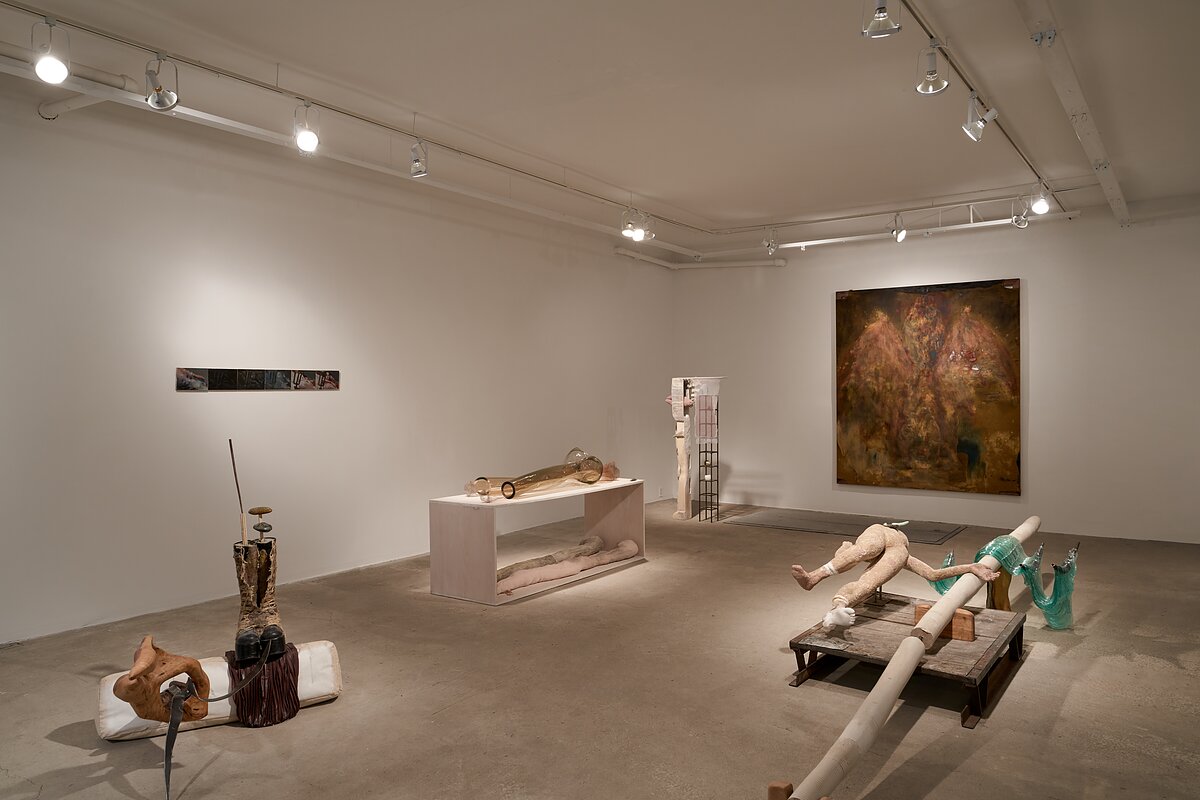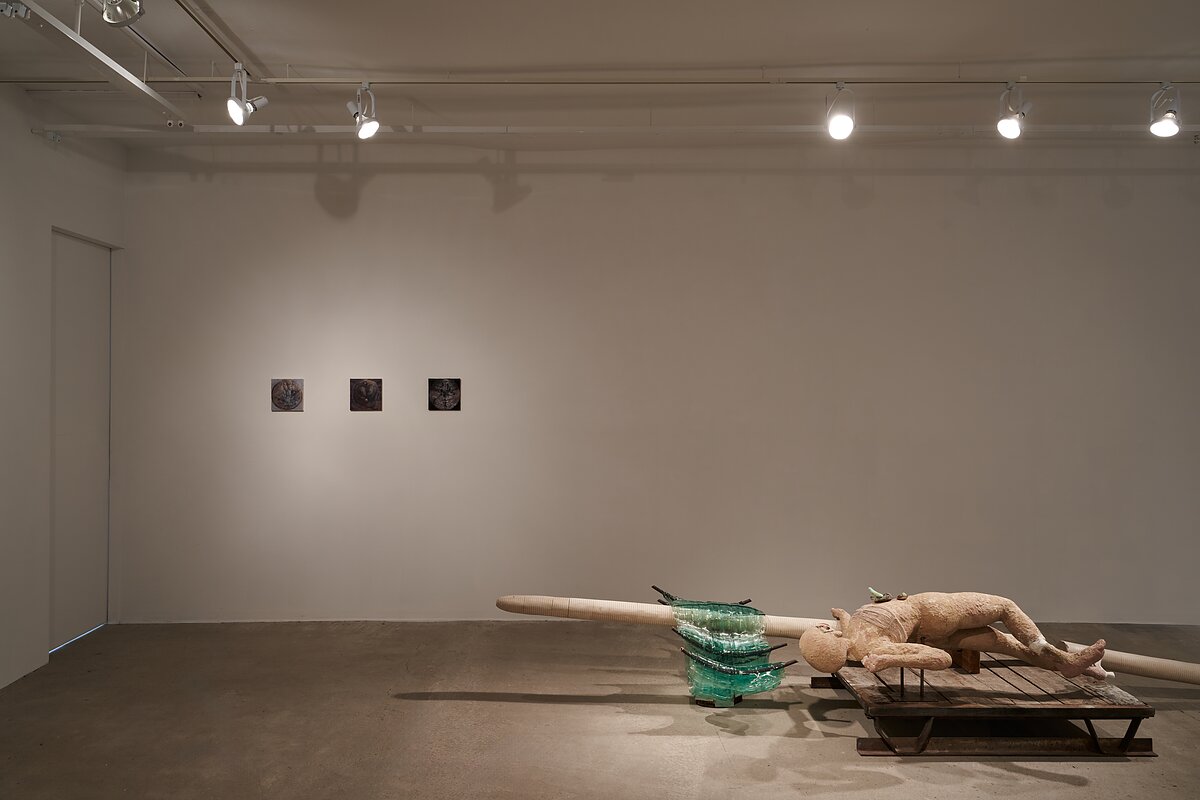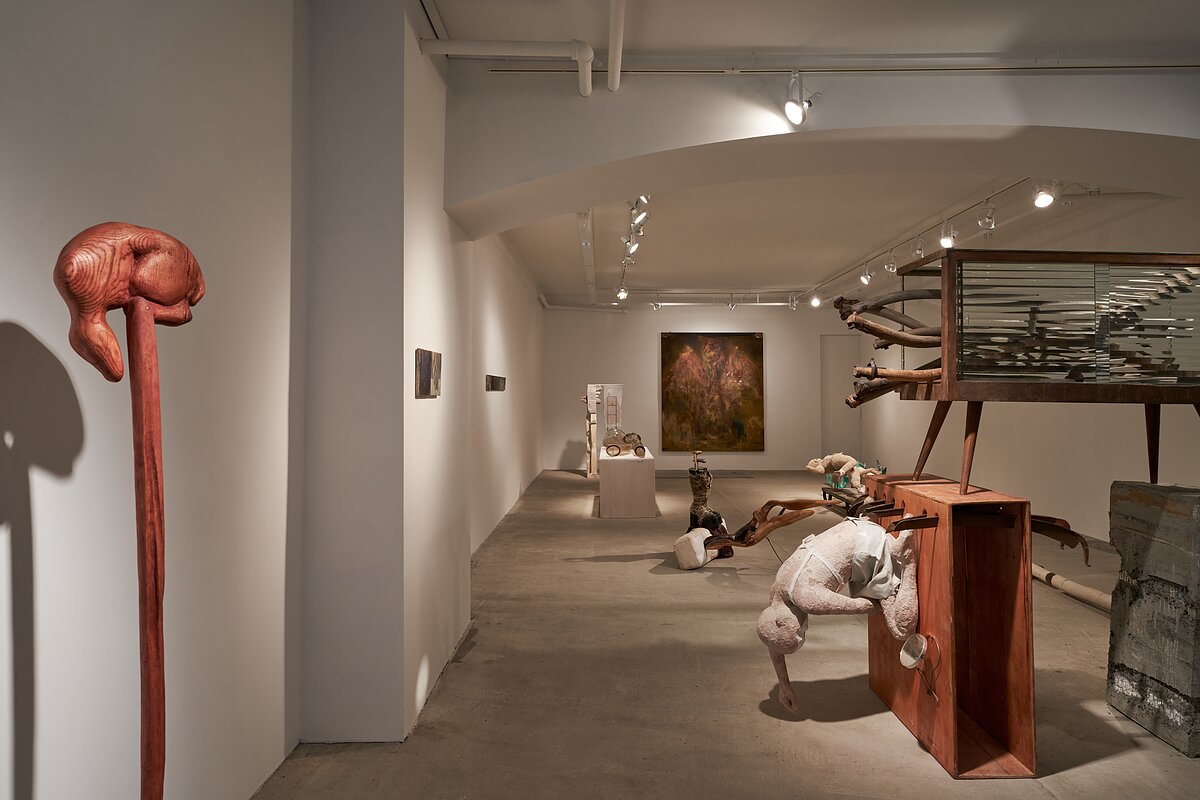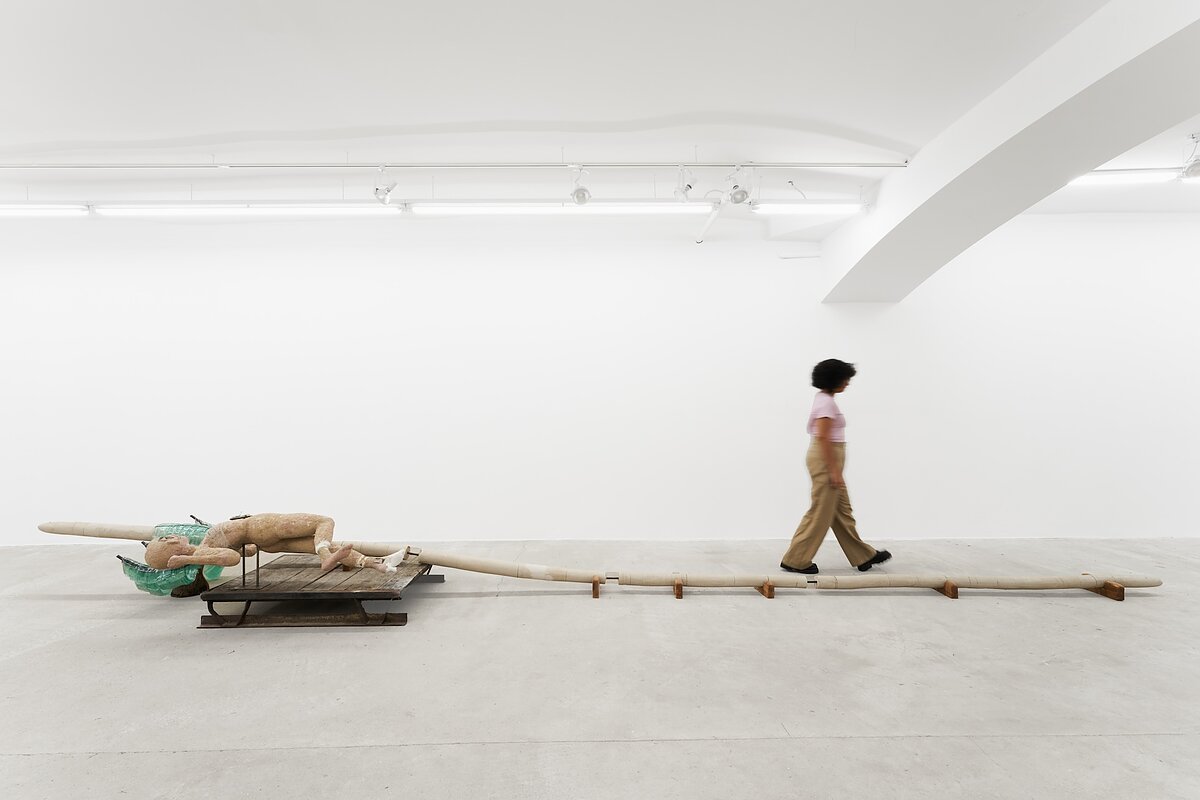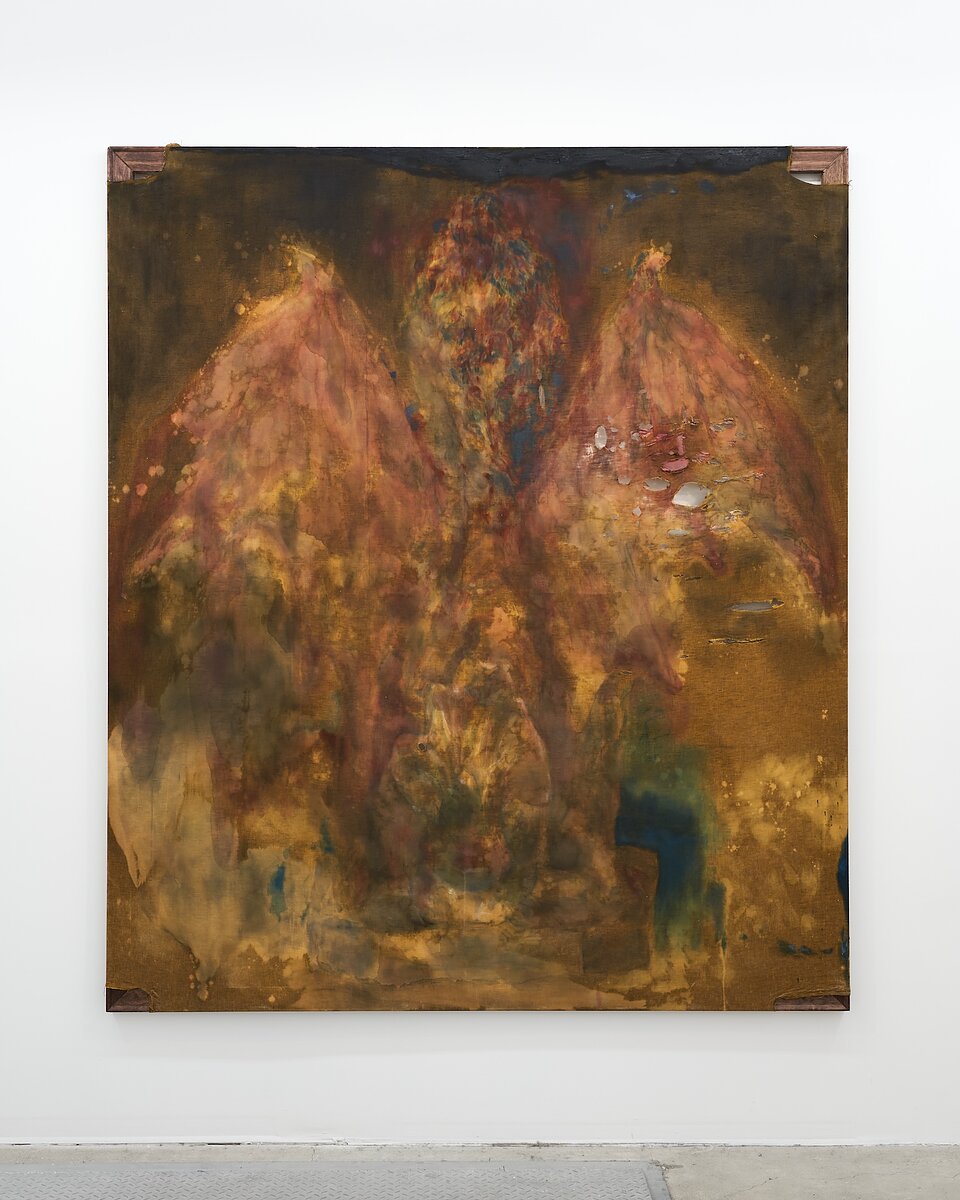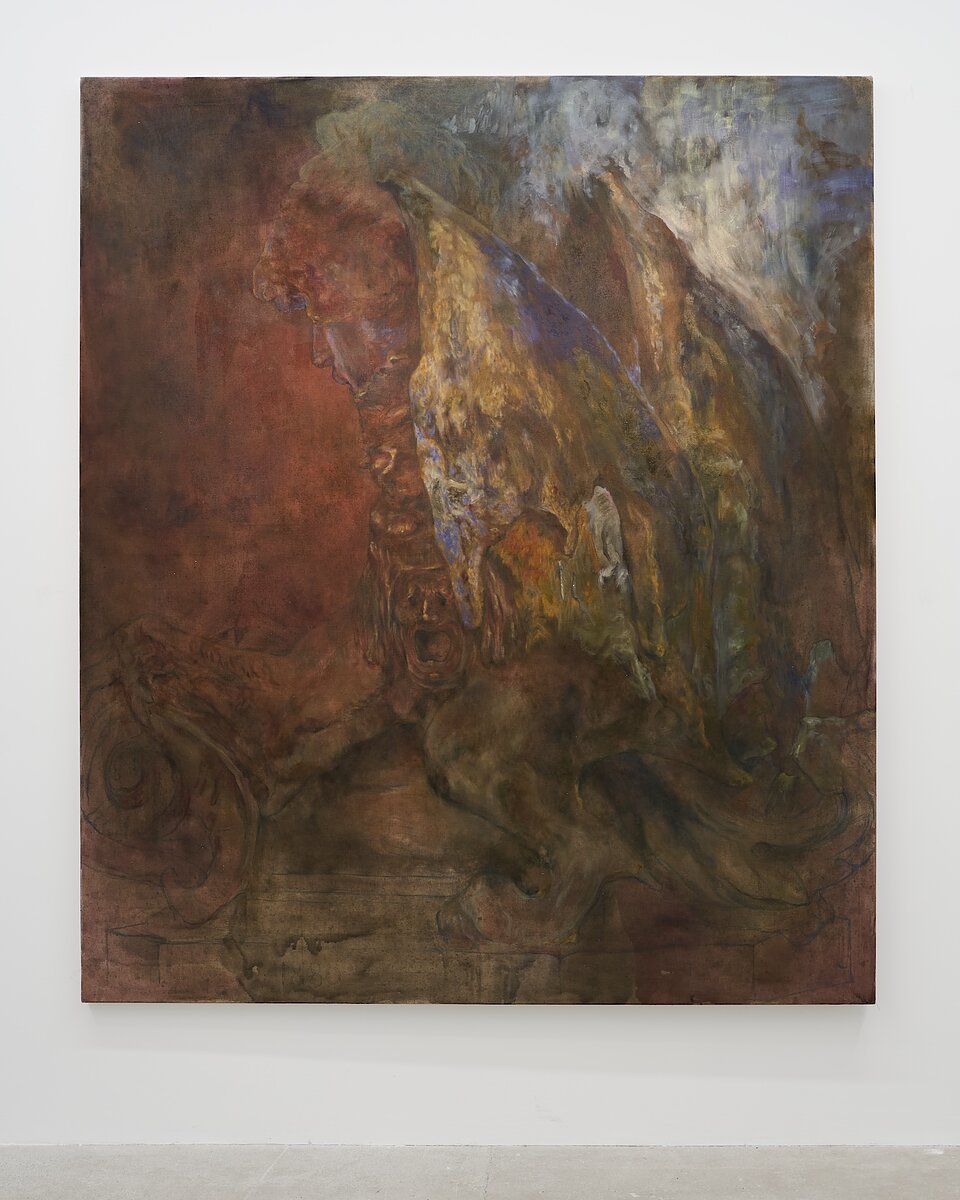The Thorny Elisions of Catalina Ouyang’s “Trick”
“Trick,” Catalina Ouyang’s third solo show at Lyles and King, is an uncanny landscape of pathologies, bodies, perversities, and forms. A wooden figure contorts its torso into an intestine, folding over a tall heeled stem of a leg. Glass tubes lay stuffed with tulle-like fabric, evocative of disembodied legs left on an operating table. An animal trap is twisted into a gnarled starfish, its exoskeleton a filmy vellum canvas. True to its polysemous title, which can be read as noun, verb, adjective, or slang, “Trick” indulges in the multiplicity and mutability of meaning: What is a trick? Who is being tricked? Is life itself the trick? To quote the poet Anne Sexton, whom Ouyang has previously cited in their work: “Life is a trick, life is a kitten in a sack.”
After a year-long break from making and exhibiting art, Ouyang returns in this show with fresh resolve—to be less articulable, refusing to impose “a consistent framework of interpretation” upon their work. Nevertheless, recurrent symbols (coins, traps, loose limbs, open orifices) and materials (wood, steel, stone, personal artifacts) are evidence of a tactile language underlying Ouyang’s illegible posture. Their sculptures evoke an abject symbolism, reminiscent of the more sinister cards in a Tarot deck, wherein figures are bound to unseemly fates, surrounded by a talismanic archive of objects.
In defamiliarizing the mundane, Ouyang estranges everyday objects from existing contexts, fragmenting but not defanging their purpose. In a different Untitled (2024) piece, the artist filled their old boots with concrete and wrapped them in twine, transforming the shoes into a makeshift satellite of debris. The steel base of Trick (2024), the eponymously-titled multimedia sculpture, is made from a floor grate that is positioned like a gate or a room divider, partially obstructing the images cast from two small projectors. This purposeful interruption invites the viewer to look closer while the projections remain ever elusive, hidden from direct sight.
Such dichotomies—the familiar and the strange, pleasure and suffering, subjugation and liberation—are present throughout “Trick,” but cohere most acutely in Brank (2024). The 15-foot tall steel sculpture is an oversized replica of a scold’s bridle, a torturous instrument from 16th-century Europe used to silence and humiliate women. The sharp bridle-bit “holds” the wearer’s tongue and prevents her from speaking. The scale of Brank emphasizes the bridle’s menacing contours while simultaneously negating its grip. By magnifying it into a looming spectacle, Brank’s perverse horror is recast as a transgressive monument, a stage-space for performances during the exhibition’s run. It becomes something to look at, not an artifact to be feared.
Ouyang’s “Sphinx Study” (2024) series similarly magnifies. In this case, they transformed Sarah Bernhardt’s 1880 sculptural self-portrait into two large paintings—a homage to the French artist, actress, and courtesan. Bernhardt’s bronze sphinx depicts herself as a mythological creature with a woman’s head, a bat’s wings, and a griffin’s claws: zoomorphic details that, up close, dissolve into mottled patches of color. In Sphinx Study (profile), the imprint of the creature’s wings resemble two jagged mountaintops, piercing through a dense fog of shadow. On the contrary, the fiery silhouette of Sphinx Study (rear) recalls a phoenix or a dragon in its resplendent burst of wings. Painted on an old bed sheet, the canvas’s symbolic heft underscores Ouyang’s affinity for Bernhardt and the monstrous.
“[Art] makes you monstrous; or, you make art because you are monstrous,” Ouyang said in a recent interview with Sophia Giovannitti. “This is maybe an antiquated dichotomy, but I stand by it.” If monstrosity is a symptom of art-making, as exemplified by Bernhardt, it is also intertwined with femininity and seduction (handy tricks of the artist-courtesan). The monstrous cannot be tamed, only tamped down, temporarily appeased.
Further exemplified in Ouyang’s “Value Study” (2024) paintings is the exchange between art and labor, selfhood and capital via the depiction of ancient Greek coins. In one Value Study, a portrait of the artist serves as a background for the negative outlines of a coin. “What does it mean to paint images of money, to know your worth, to want more?” Ouyang asks in the exhibition essay. To issue yourself as currency into circulation; to determine your commodity value before others can. Liberation and subjugation: two sides of the same coin.
Walking amongst Ouyang’s collaged detritus, I found myself fixating on specific parts rather than surveying it in gestalt: a stone hand clawing into an open mouth in Untitled, which bears some resemblance to Ouyang’s earlier work in doubt II (2020); the tulle-like stockings in Finders; the sinister sixth panel of Deed, a six-panel painting of a scene in Catherine Breillat’s film Anatomy of Hell, where a stranger violates a sleeping woman with a pitchfork. These standout fragments strike me as more explicitly purgative—representational forms that a viewer can latch onto as “abject” or “grotesque”—though it is through a precise confluence of craft that these elements don’t distract from the conceptual underpinnings of Ouyang’s work. An internal order prevails, even as the work secretes a “libidinal overflow,” per the artist, a chaotic discharge organized around its creator’s psyche.
—Terry Nguyen is an essayist, critic, and poet from Garden Grove, CA.

